I’ve heard many great things about Lübeck. The city is said to be beautiful, filled with quaint streets and picturesque buildings. It is a city worth visiting, at least for a weekend, due to its unique ambiance. This summer, I had the opportunity to explore the city and determine whether these glowing reviews were warranted. I wasn’t disappointed.
Lübeck is located in the state of Schleswig-Holstein, along the Bay of Lübeck. Before diving into the sights of Lübeck, let me share an interesting tidbit: the name ‘Lübeck’ traces its roots back to a settlement established in the area by the Swabian Slavs, known as Liubice.
So, what are the must-see locations in Lübeck? The list of interesting places, including a map, will be provided in the following post.
Table of Contents
Lübeck – Sightseeing Map
Before delving into the map, let me share another interesting fact. Did you know that Lübeck can be reached by train from Poland? Specifically, there’s a direct line from Szczecin, and in less than five hours, you can find yourself in Lübeck.
On the map below, I’ve marked the attractions in Lübeck that I will mention in this post:
Old Town in Lübeck
Unquestionably, Lübeck’s Old Town is a prime example of medieval German architecture, boasting unique historical heritage. It’s no surprise that it was designated a UNESCO World Heritage Site in 1987.
What should you see in the Old Town? The UNESCO-protected area houses more than a thousand historical buildings, making it difficult to list them all. However, I can start by mentioning that the entrance to the Old Town is through two historical gates:
- The Holstein Gate (Holstentor) – This is one of the most recognizable and iconic structures in Lübeck.
- Castle Gate (Burgtor) – Though less famous, it is an equally impressive example of medieval defensive architecture.
Lübeck has earned the moniker “City of Seven Towers” due to its numerous churches. This refers to the seven towers belonging to the five Gothic churches within Lübeck. These are St. James, St. Mary’s, St. Peter’s, St. Idzi, and the Cathedral.
Let me highlight other interesting buildings located in Lübeck’s Old Town in the following sections.
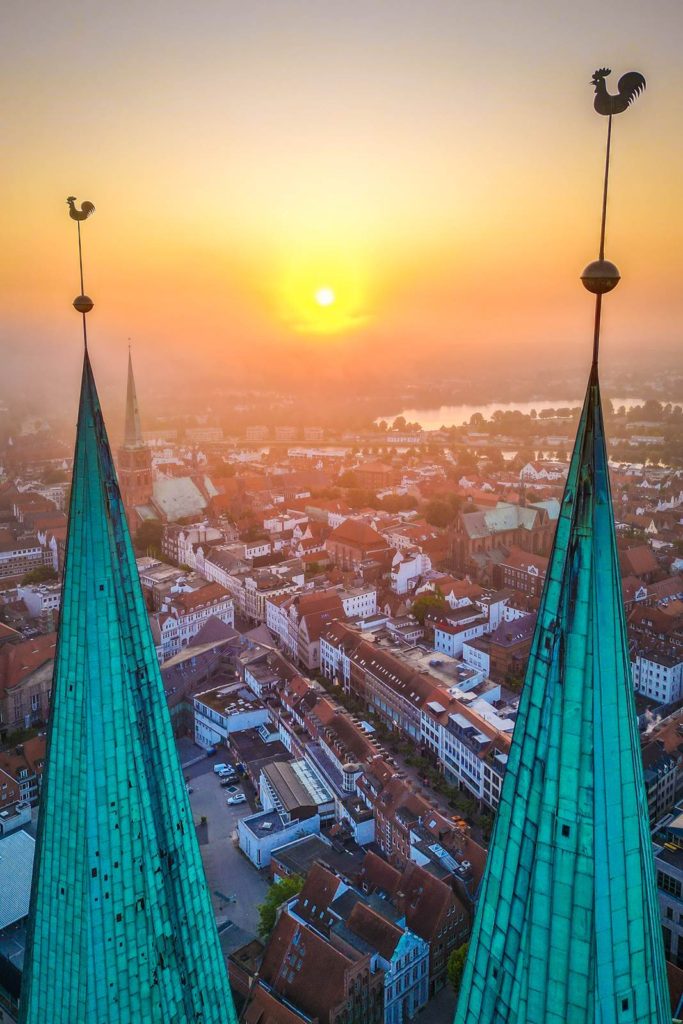
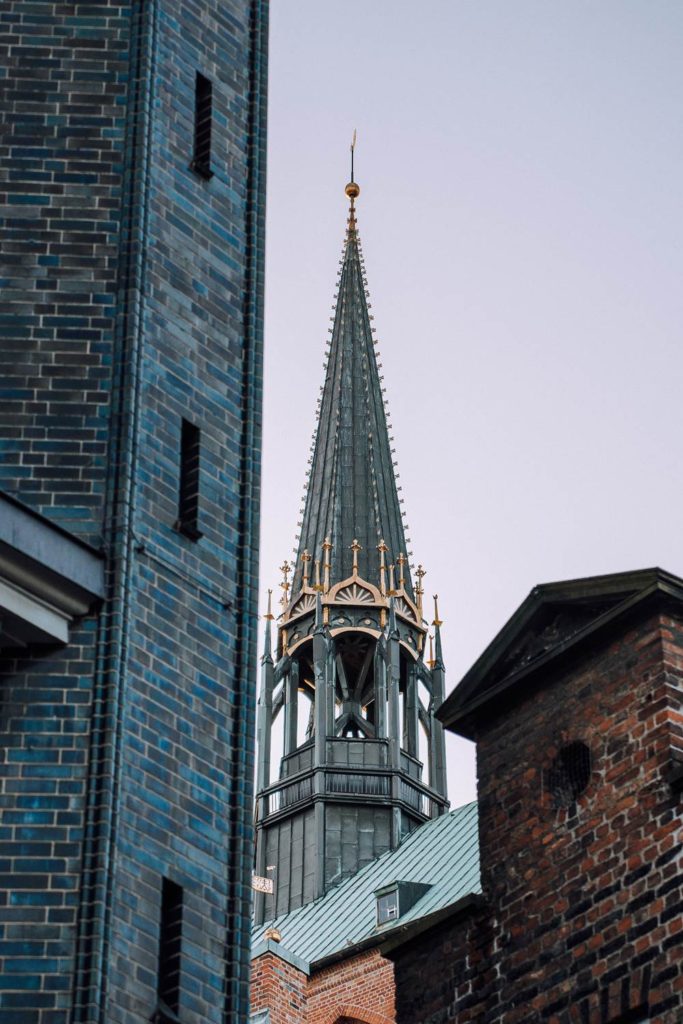
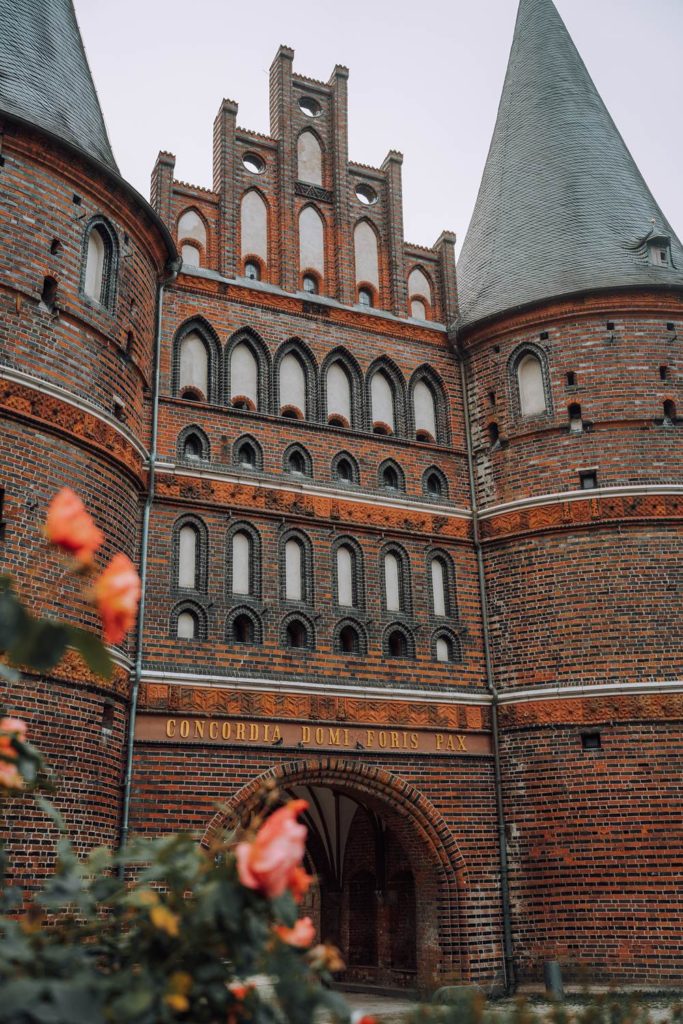
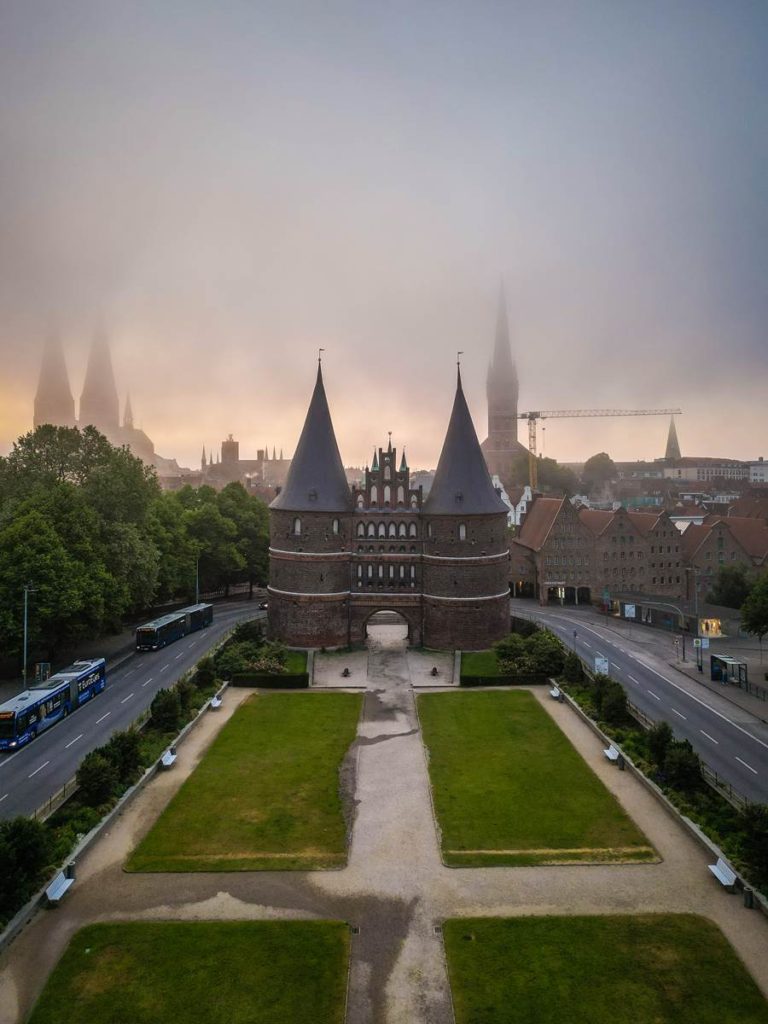
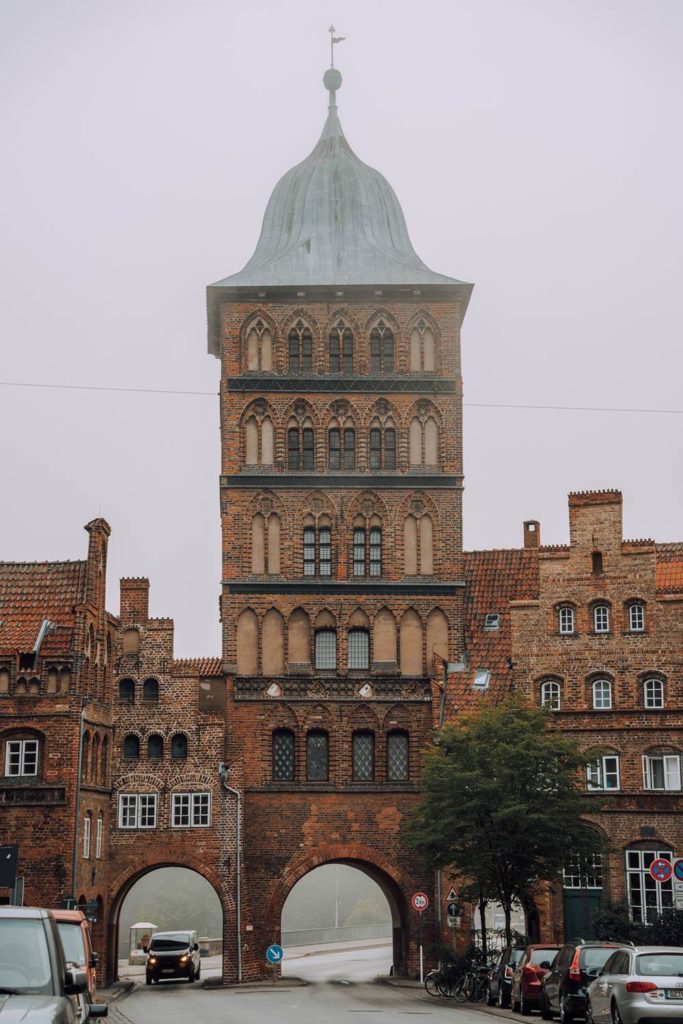
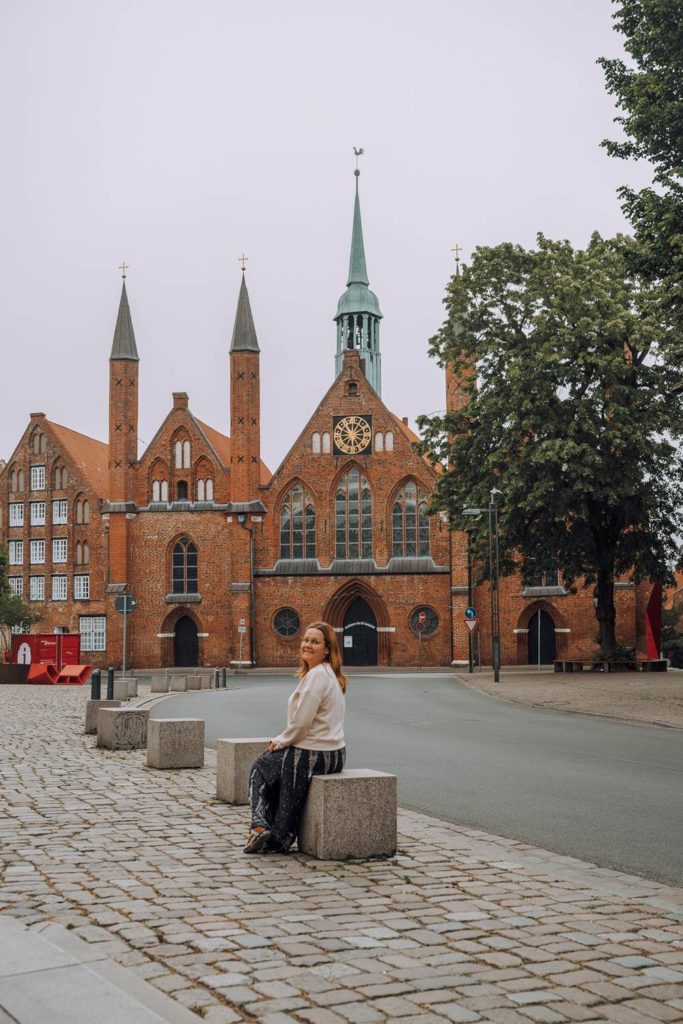
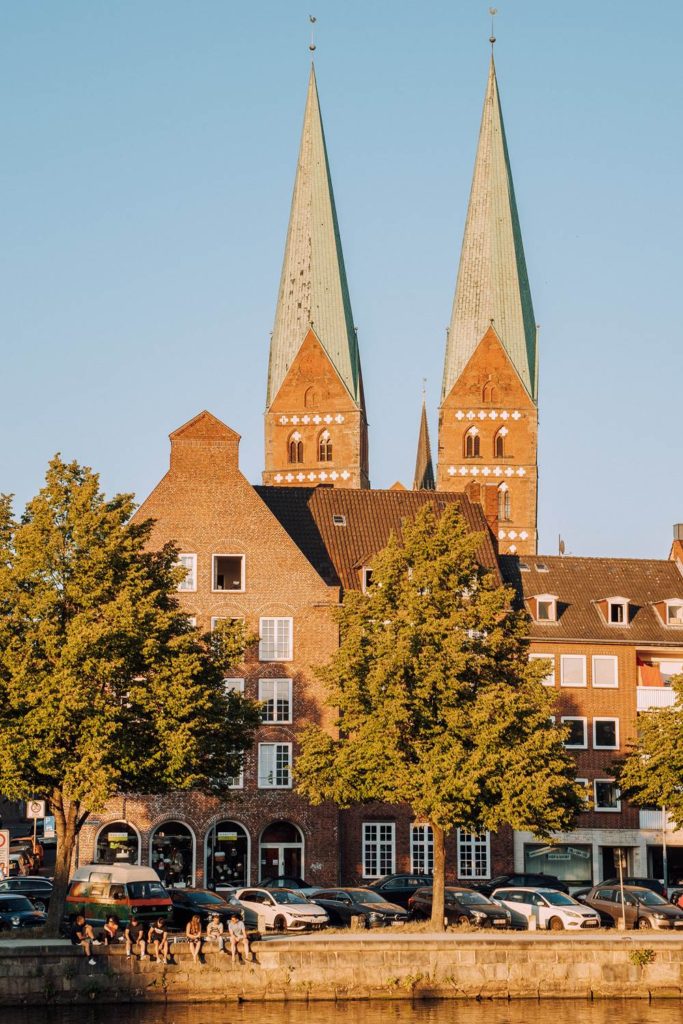
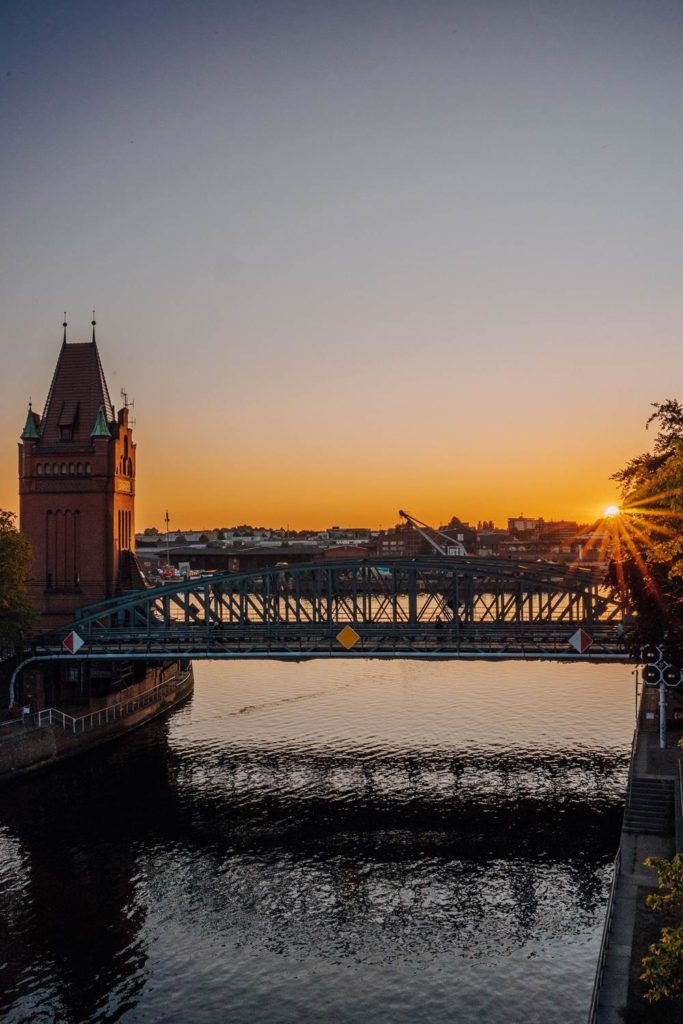
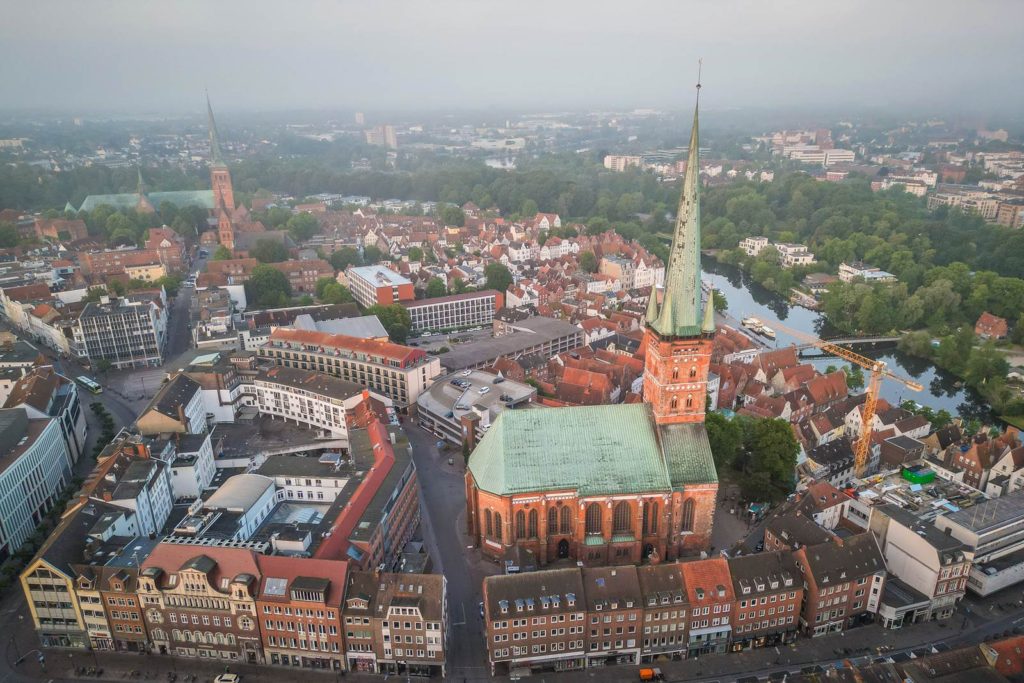
The Former Holy Spirit Hospital (Heiligen-Geist-Hospital)
The Holy Spirit Hospital is among the oldest existing hospitals in Europe and the world. Established in the 12th century, it initially served as a refuge and care facility for the poor and sick. Nowadays, it operates as a museum showcasing life in a medieval hospital. Notably, the hospital offered private rooms, a luxury even in modern times. Additionally, the chapel within the hospital is adorned with colorful medieval frescoes. It’s definitely a place worth visiting.
Interesting Fact: During the holiday season, the hospital grounds transform into a popular Christmas market.
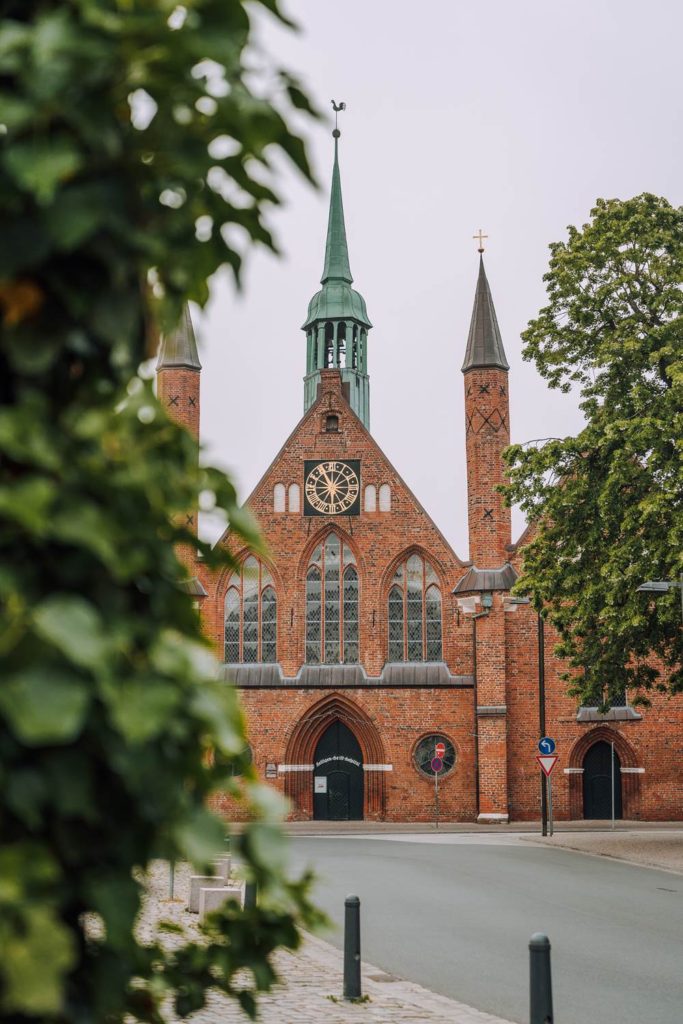
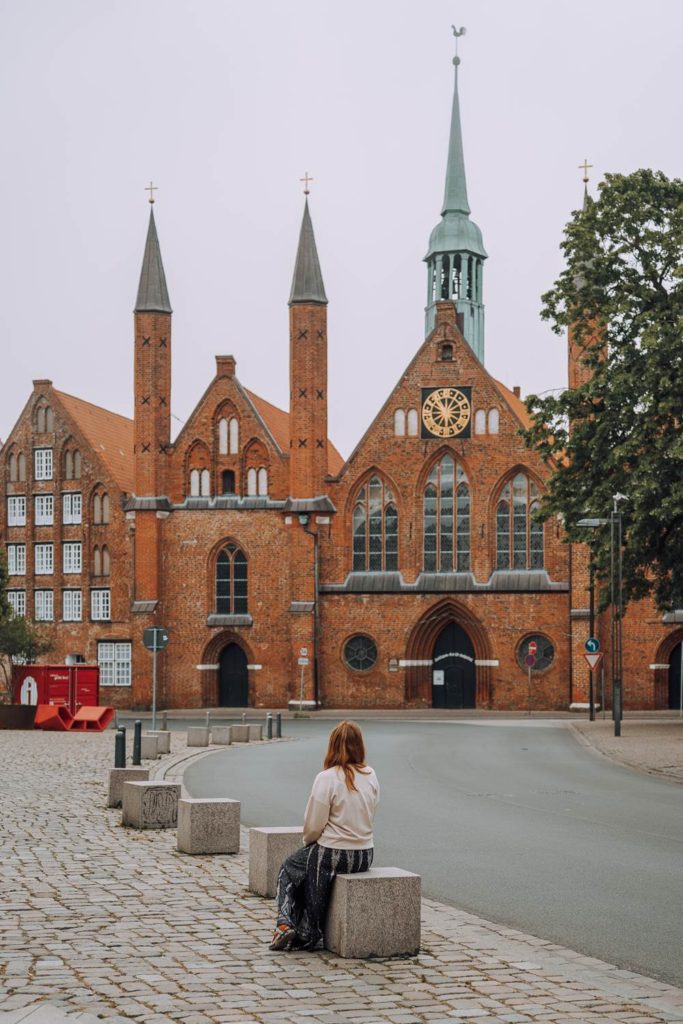
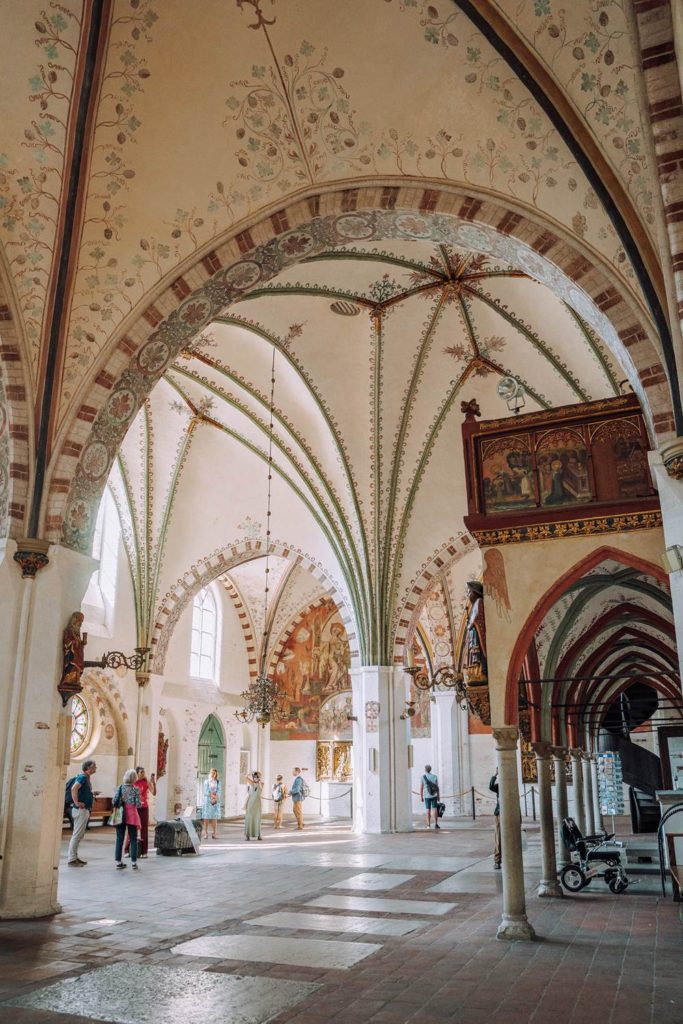
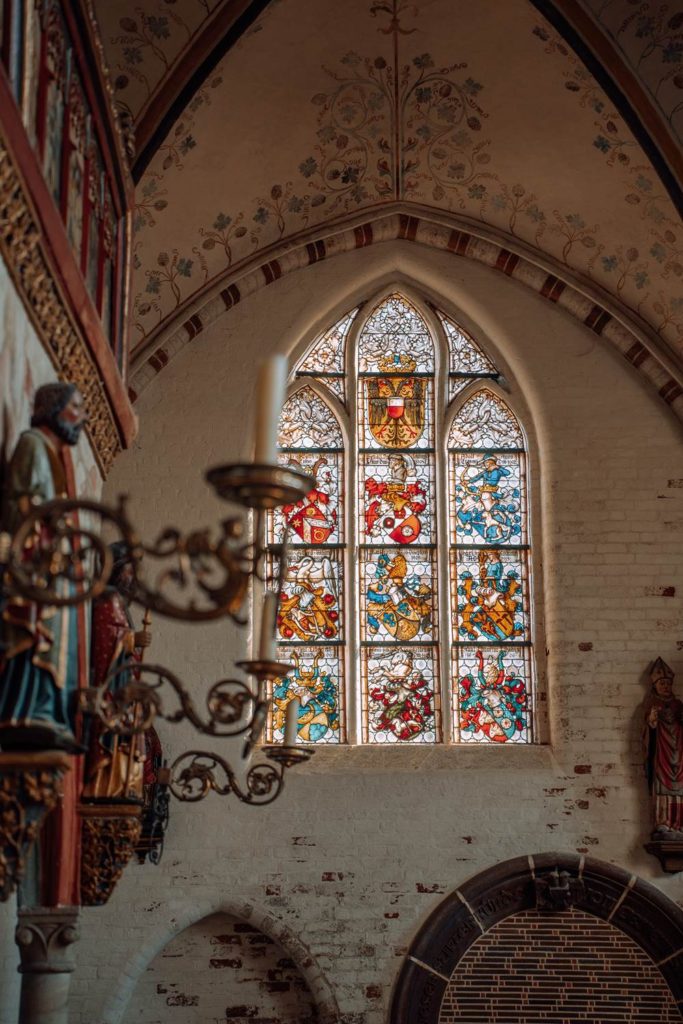
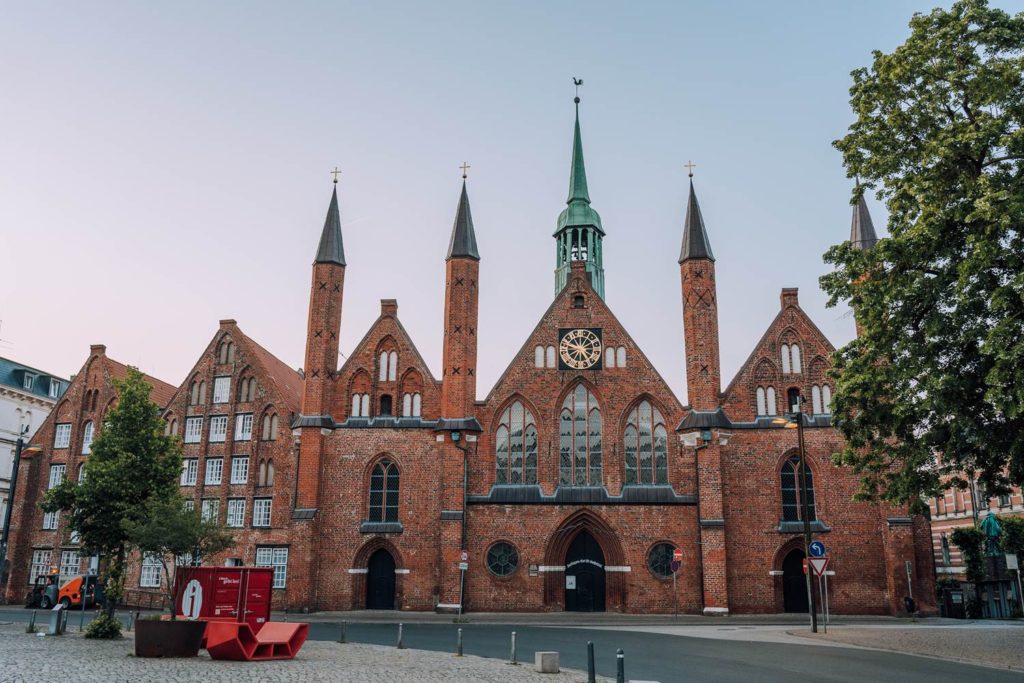
Lübeck City Hall
Lübeck City Hall is one of Germany’s oldest and most distinctive town halls. Its construction, which began around 1230 after the city obtained free city status, incorporates various styles. The gothic south wall, originating from this period, still stands. In 1435, the town hall expanded in the late Gothic style, adding a representative façade and a series of turrets. Later, around 150 years after, a Renaissance loggia and a Dutch-style staircase were introduced.
Interesting Fact: The city hall suffered damage during the British bombing in 1942.
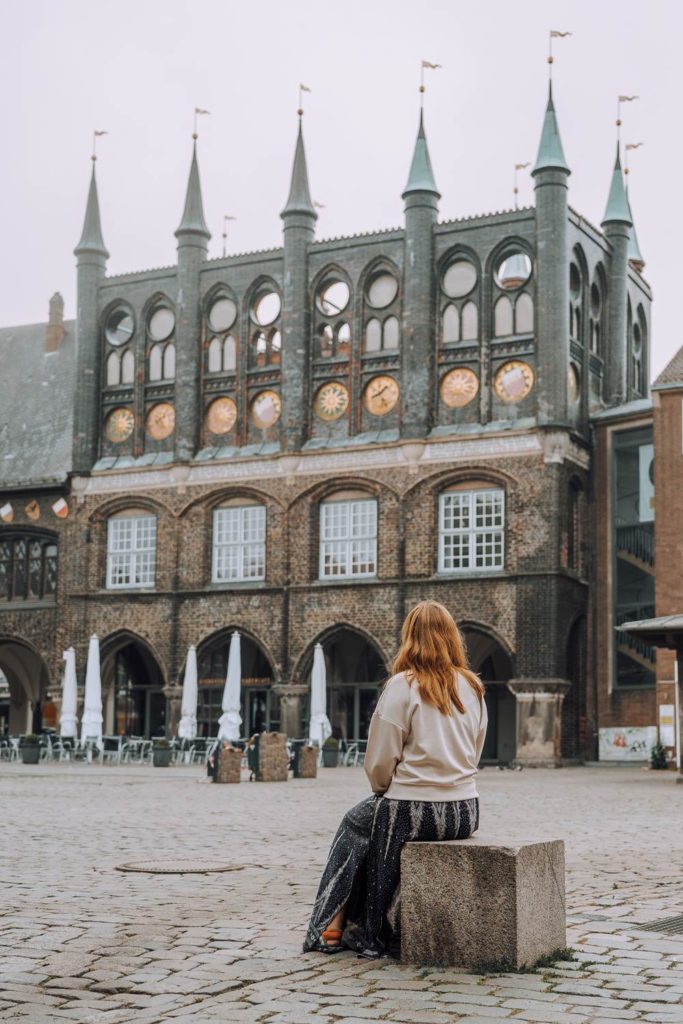
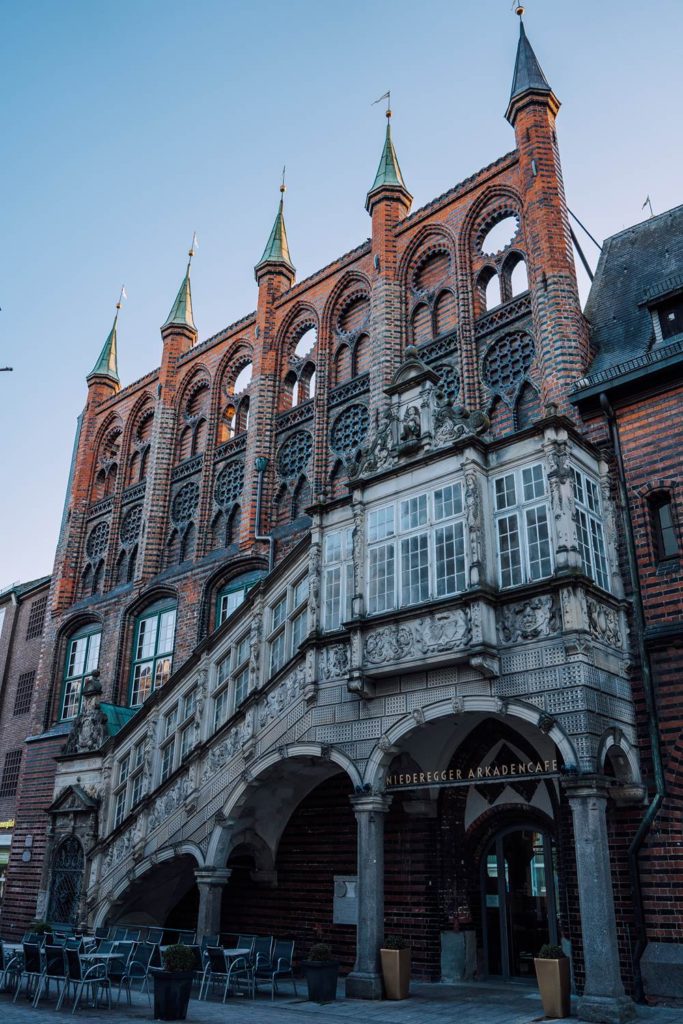
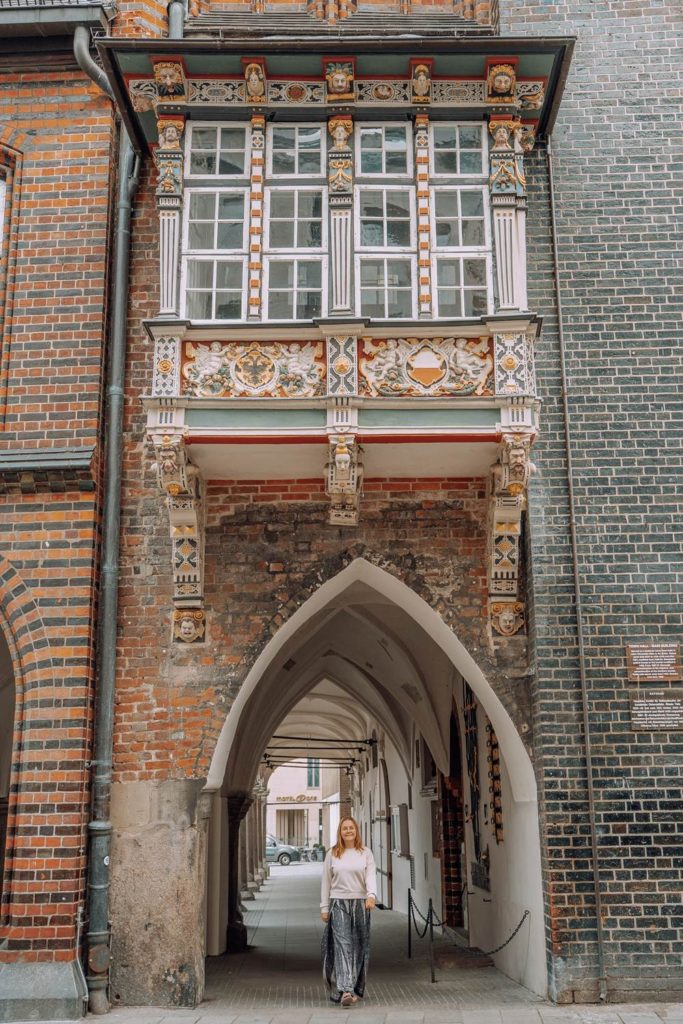
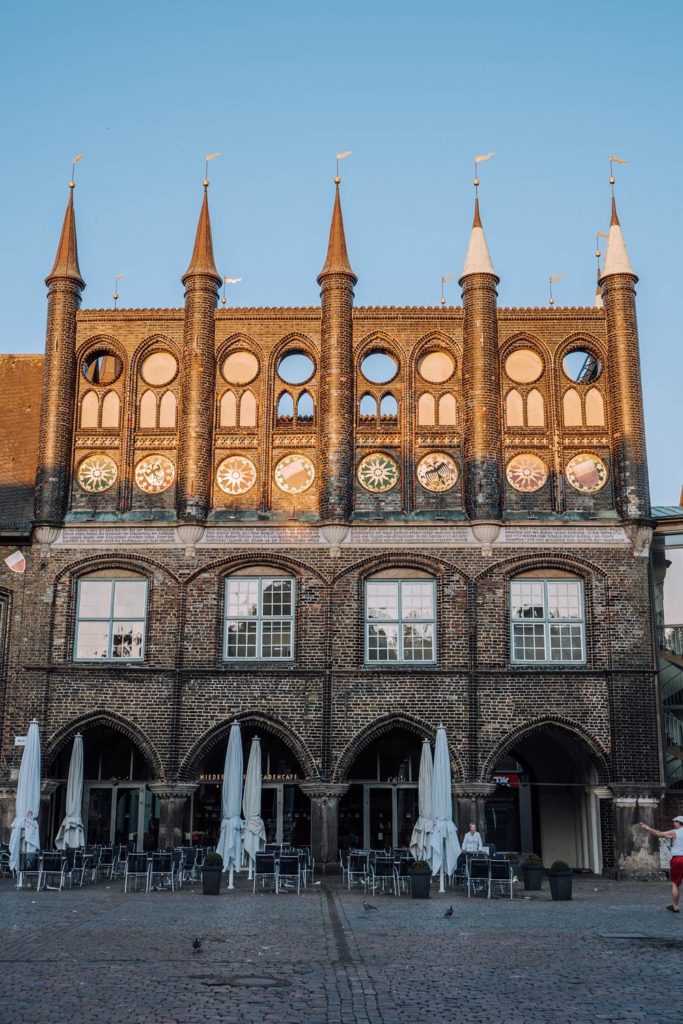
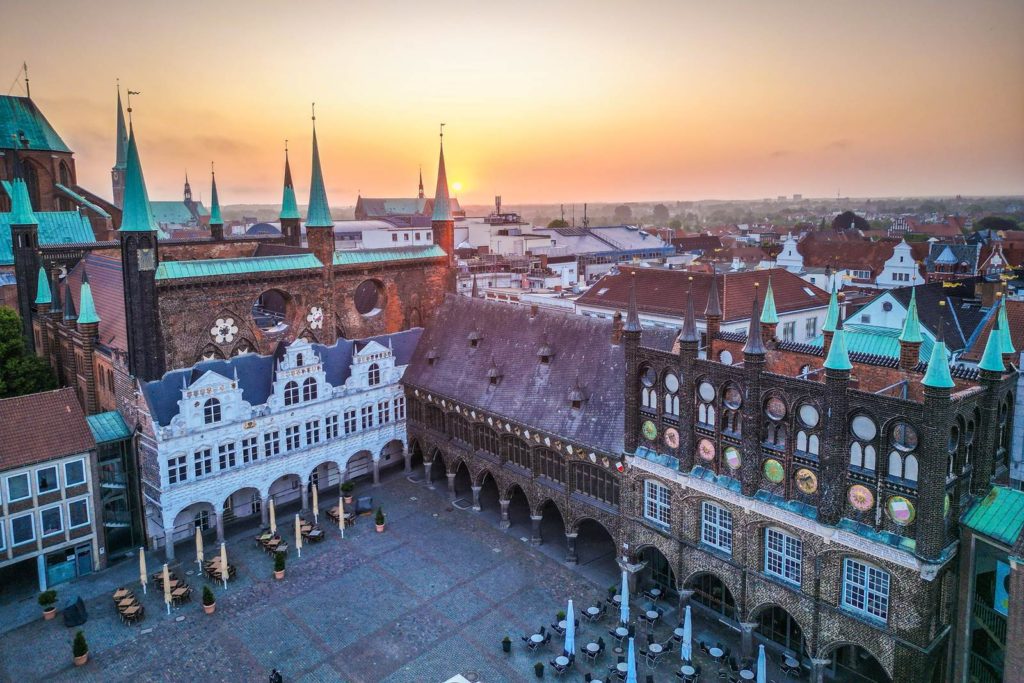
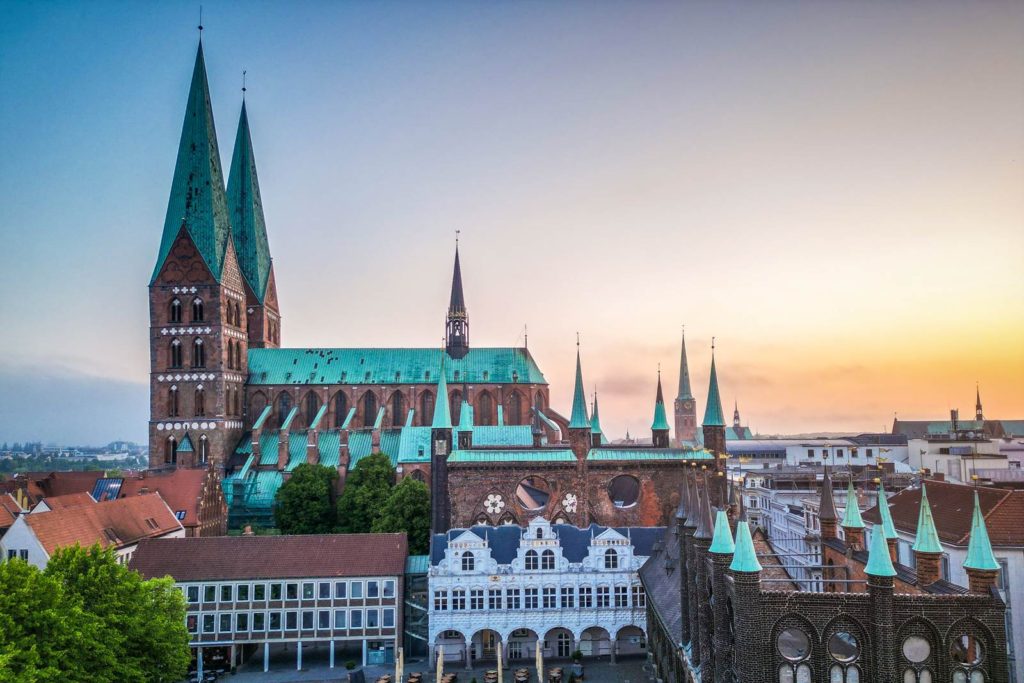
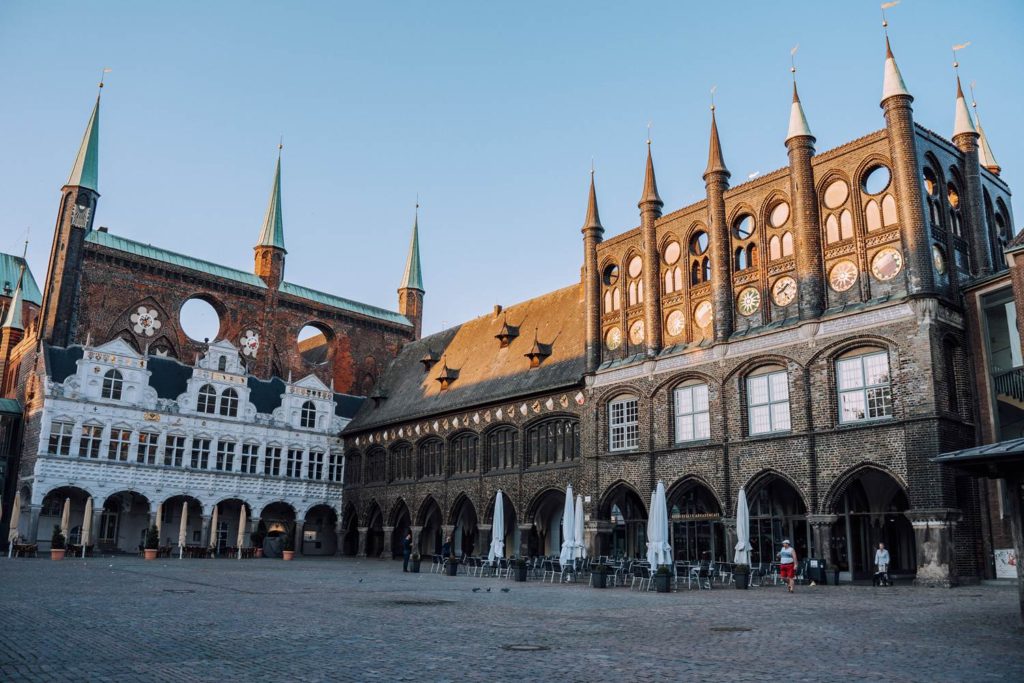
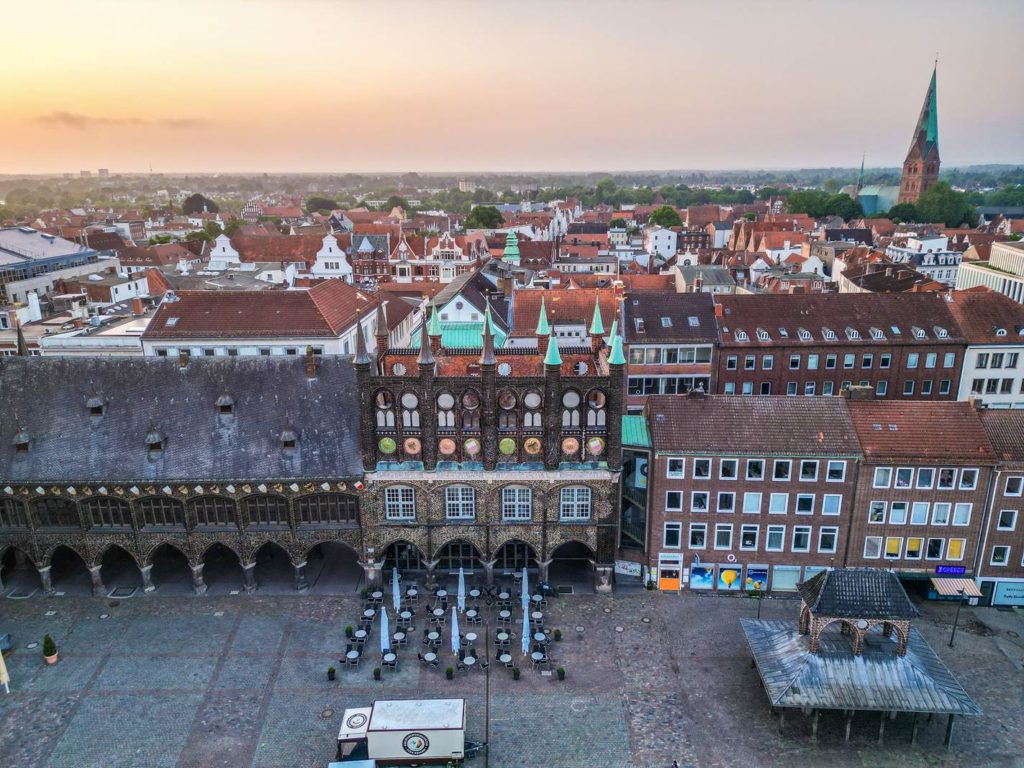
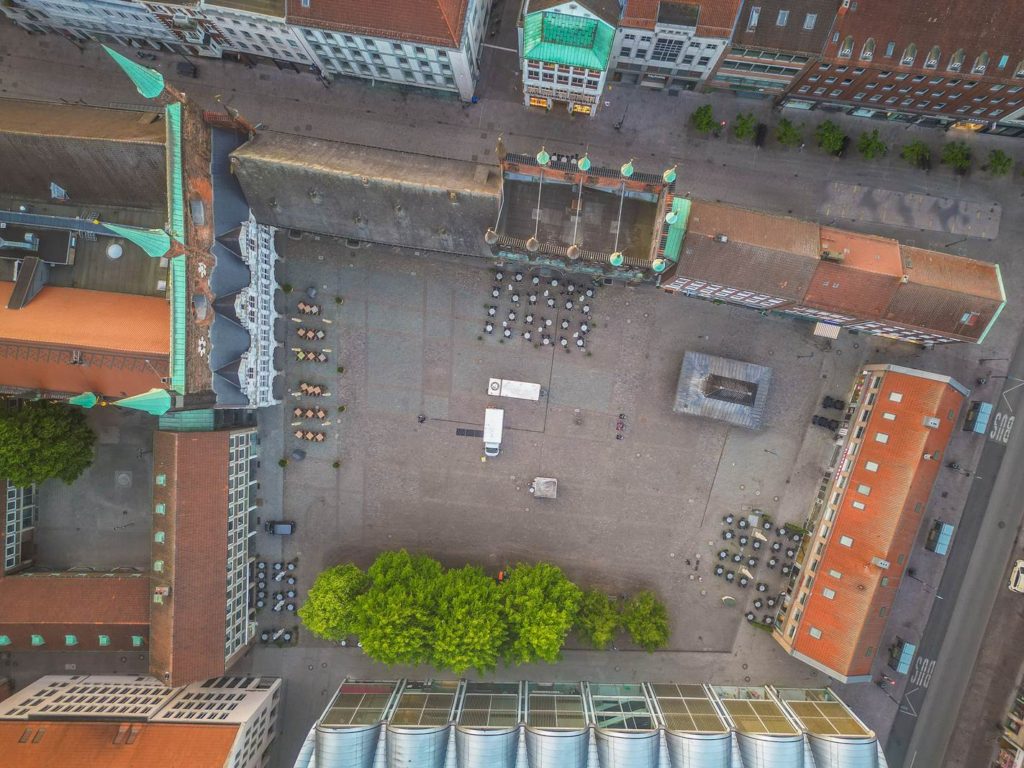
Salt Granaries on the Left Bank of the Trave
These distinctive brick buildings bear witness to the historical significance of the salt trade in Lübeck. Constructed in the 16th century, the granaries reflect the city’s industrial past. Despite the cessation of salt production, these granaries remain a symbol of the city’s history. Their grand architecture and location alongside the Trave River attract photographers and architecture enthusiasts alike.
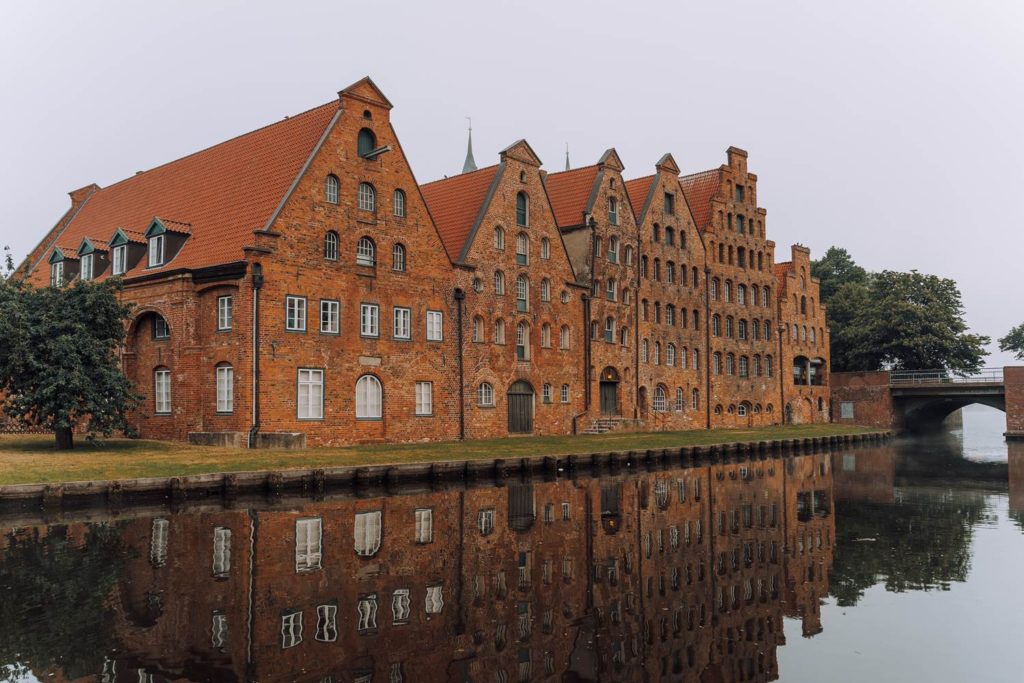
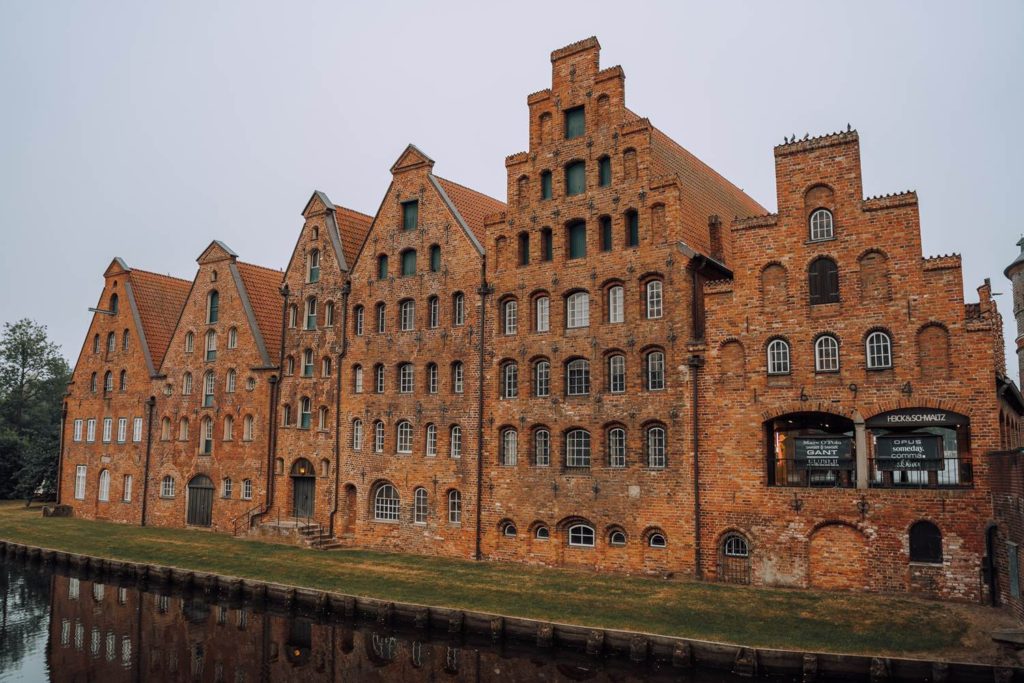
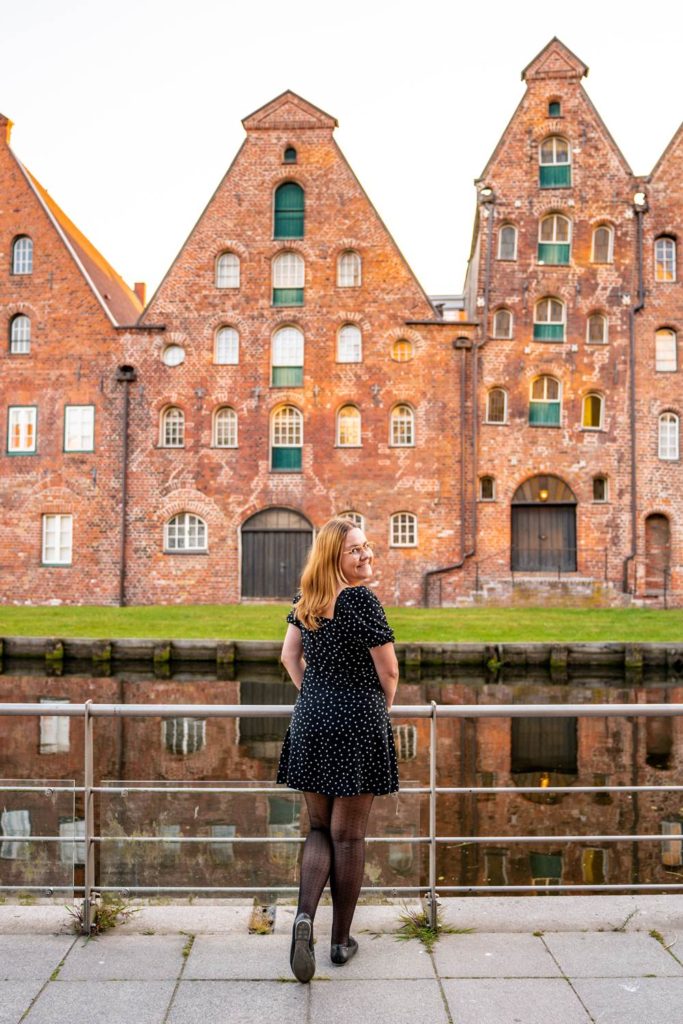
Courtyards in Lübeck
If I were to single out one characteristic that sets Lübeck apart, it would be its inner courtyards, tucked behind individual houses. As you traverse the narrow streets leading to these courtyards, you’ll feel as though you’ve been transported back in time. Lübeck’s true essence can be found in these courtyards, brimming with blooming flowers and trees, seemingly untouched by the passage of time. This is the Lübeck that truly captivated me.
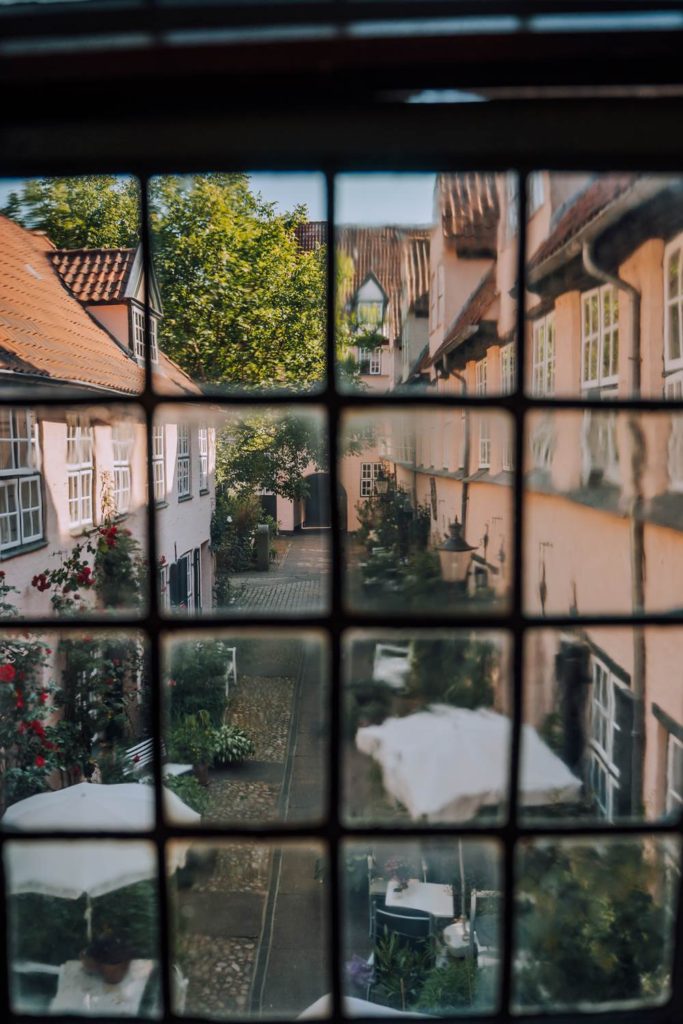
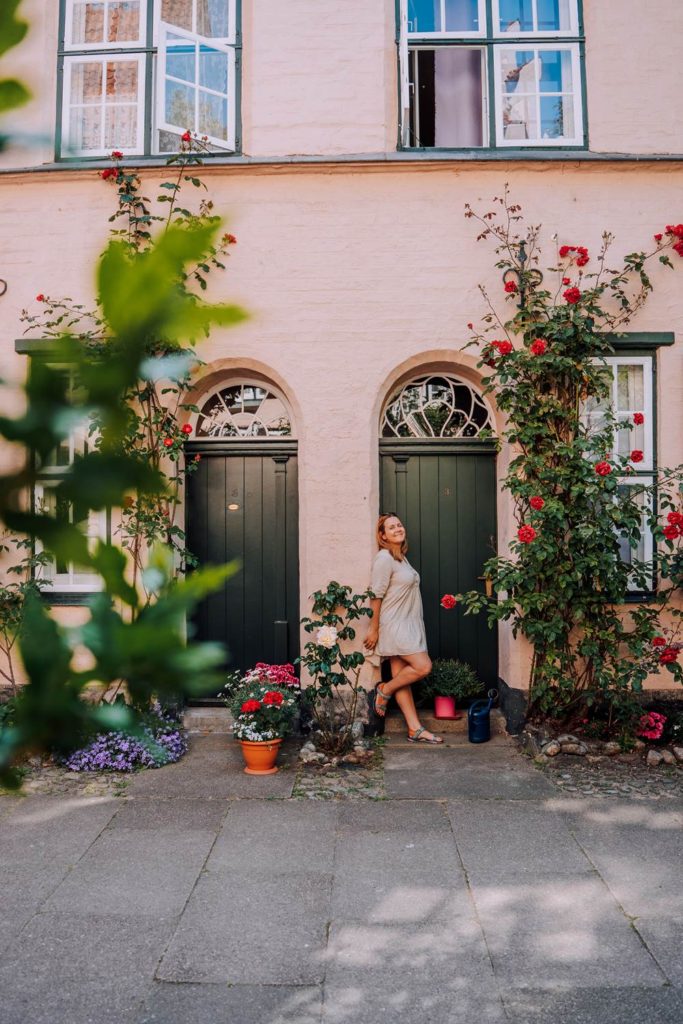
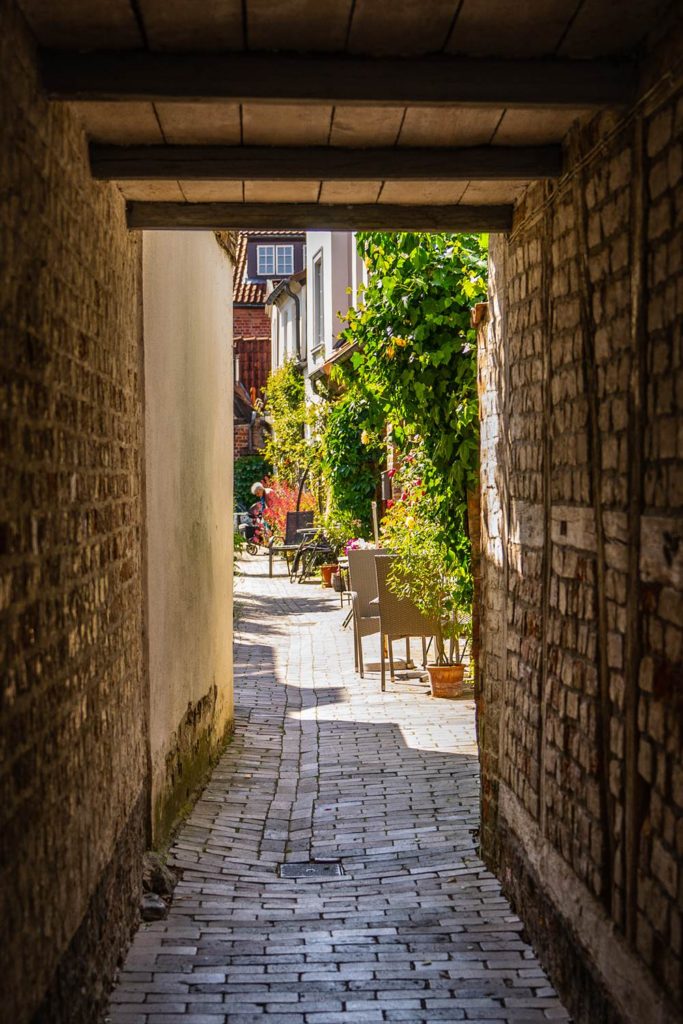
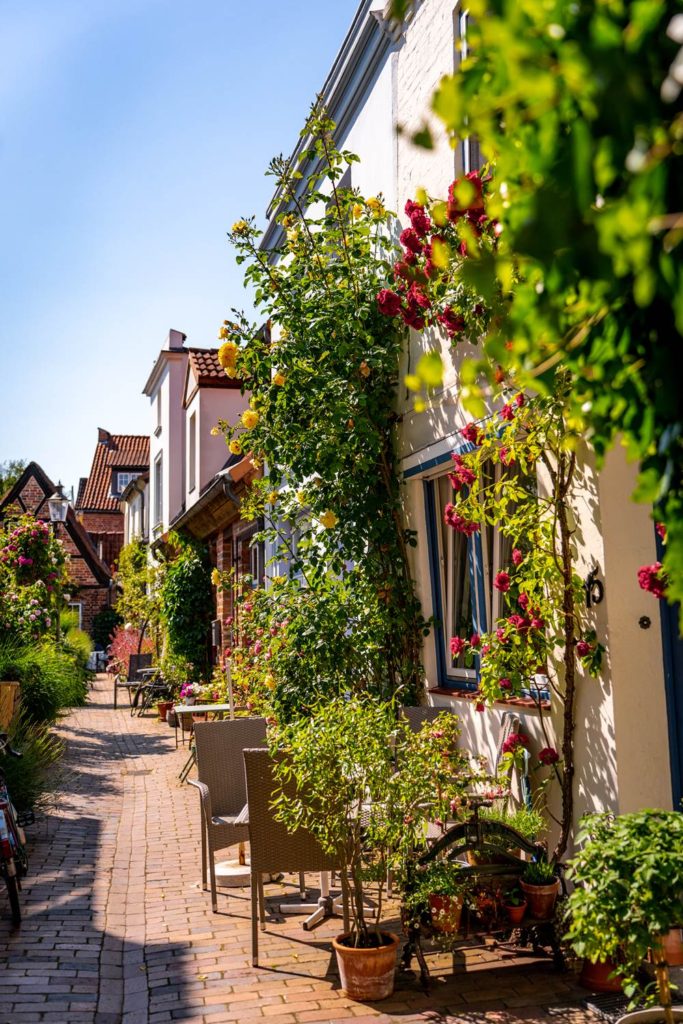
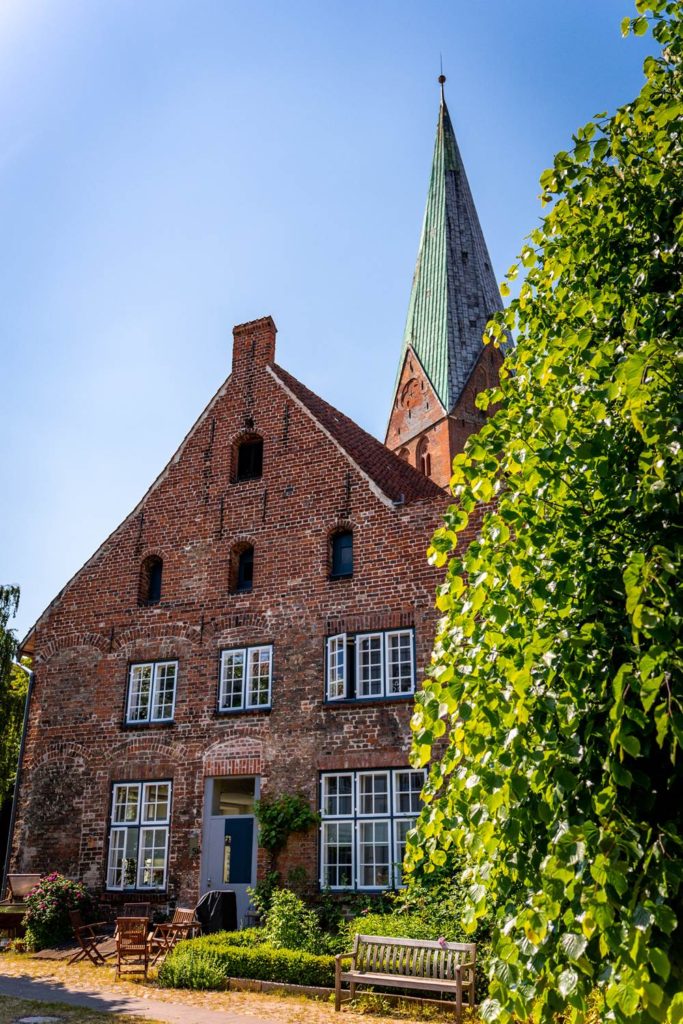
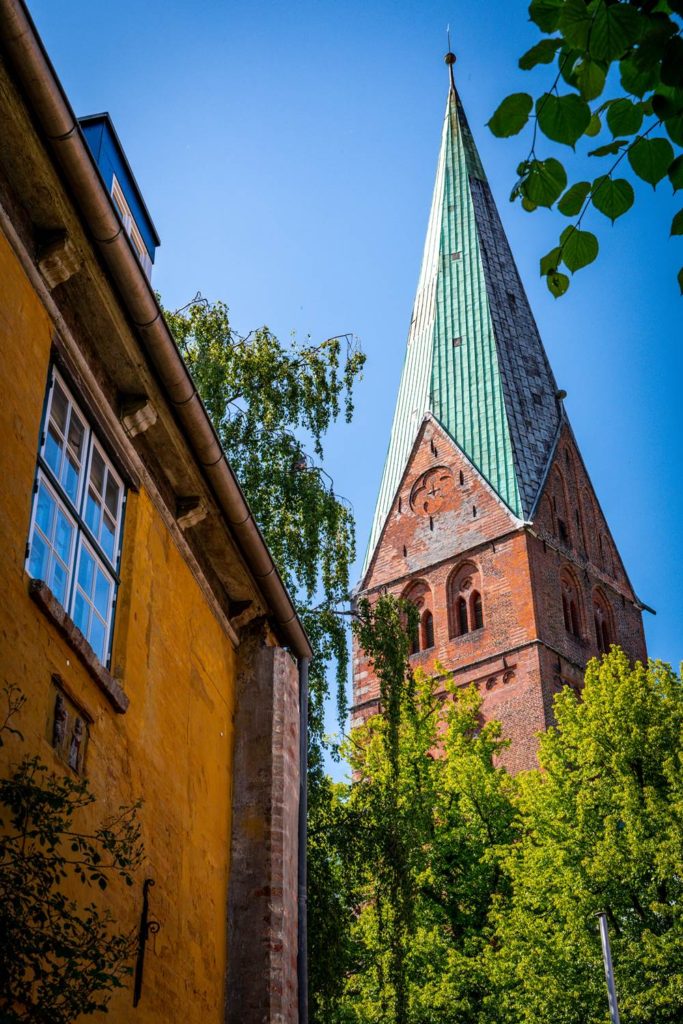
Günter Grass House
Günter Grass, a Nobel laureate and prominent writer, lived near Lübeck, specifically in Behlendorf. However, it’s in Lübeck where you’ll find the Günter Grass House (Das Günter-Grass-Haus). This museum houses numerous manuscripts, lithographs, watercolors, and drawings, all testaments to the remarkable work of this eminent author.
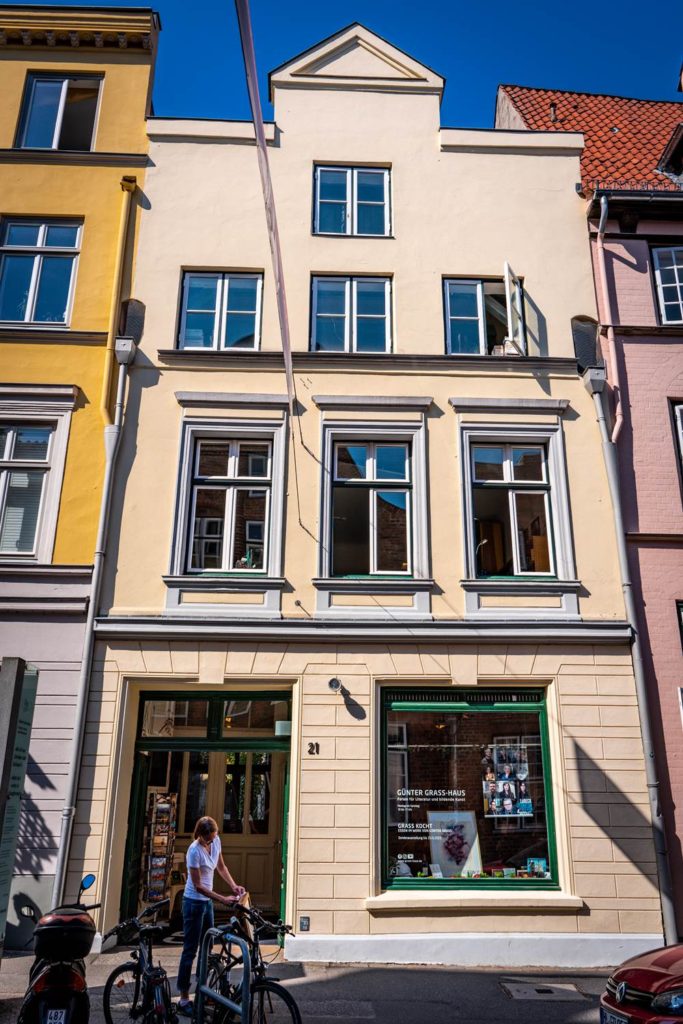
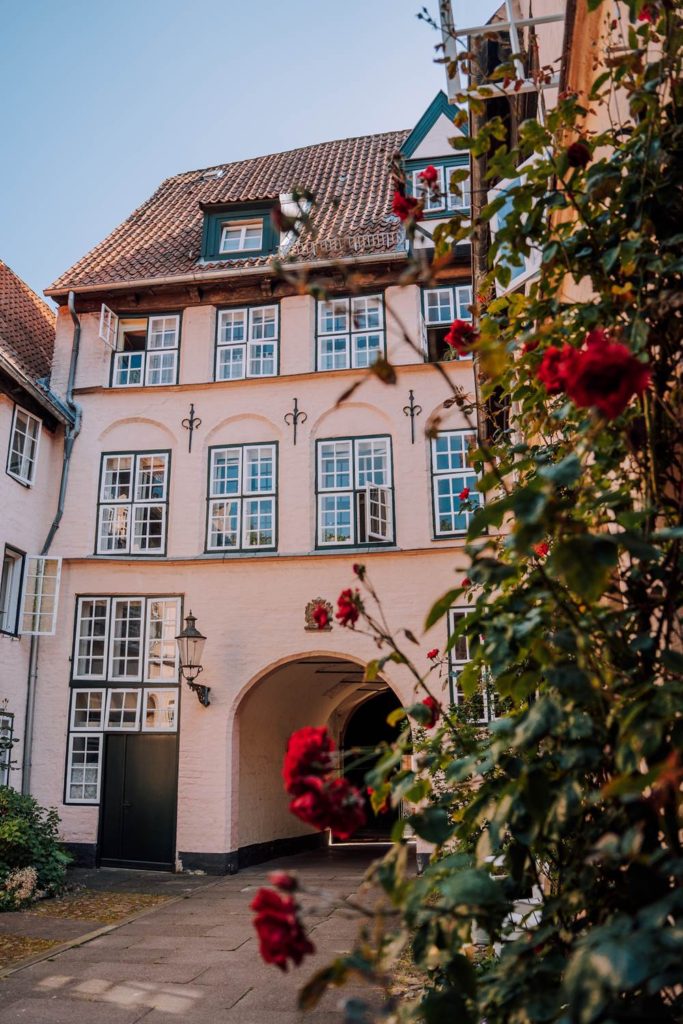
What to Do in Lübeck?
Beyond the sightseeing, Lübeck offers an array of leisure activities. With access to the river, the city offers ample opportunities for water sports like kayaking, stand-up paddleboarding, and boating. The area surrounding Lübeck is renowned for its biking and hiking trails. Given its bay location, you can also take trips to neighboring cities or countries.
What else? The food! Thanks to its coastal location, local cuisine features a wide array of fish and seafood dishes. Additionally, Lübeck is famous for local specialties, such as marzipan. All these factors make Lübeck a perfect destination for a vacation or weekend getaway, offering a beautiful city, an intriguing location, and delectable cuisine.
Planning a trip to Germany? Make sure to check out Lübeck!”
See also:
Saxony-Anhalt: Must-See Attractions You Can’t Miss
Wernigerode: Unveiling the Fairy Tale Beauty of Germany’s Hidden Gem!
Things To Do In Quedlinburg – Tips for a Day Trip